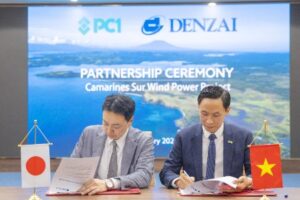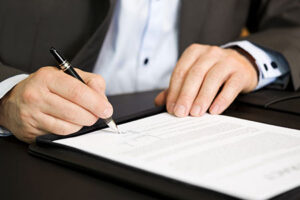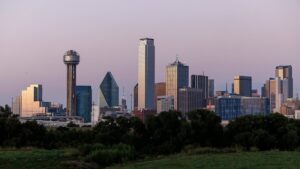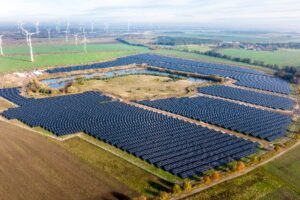How Do Wind Turbines Work
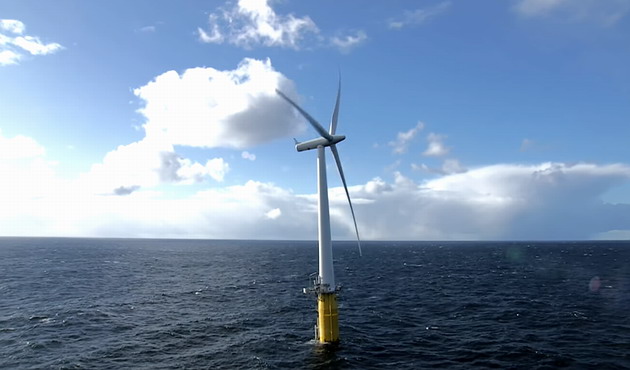
How is wind energy produced? How do wind turbines generate electricity? What are the uses of wind energy today? to all these questions we have the proper answer that can help you in your work.
How is Wind Energy Produced?
Wind is produced by the Sun that heats the different layers of air in our atmosphere in an uneven way, which makes the hotter air rise and the cooler air to descend.
This up and down movement of the air represents the wind that has been used by mankind since antiquity for its numerous uses.
Today, wind turbines are used to convert a great amount of energy present in the wind into clean electricity that is used to feed the grid along with other sources of power.
How Do Wind Turbines Produce Electricity?
Wind turbines need to convert the most amount of energy provided by the wind into clean power.
To ensure the fact that the wind turbine will convert the most amount of kinetic energy present in the wind into clean electricity, the blades of the turbine need to be developed using state-of-the-art aerodynamic analysis and also additional equipment to enhance the performance of the turbine.
Components of a Wind Turbine
Today, we are using very tall wind turbines to capture the stronger winds available at height, and the components of such a wind turbine are as follows:
1. Tower
Could be made from a steel bar, concrete or steel lattice, and needs to be strong and heavy to support the entire structure of the turbine and the rotating propeller.
The tower also needs to be tall to ensure the fact that the rotating turbine works in the stronger winds available at higher altitude.
2. Yaw drive and yaw motor
These are both inside the tower and the yaw drive is used to keep the turbine facing the wind when the direction of the wind changes.
Only upwind turbines require the presence of the yaw drive and yaw motor to keep the rotating turbine facing the wind, while downwind turbines don’t need the yaw drive because the wind will manually blow the rotor away from it.
The yaw motor is used to power the yaw drive.
3. Rotor and blades
The turbine mounted on the top of the tower uses a rotor with aerodynamic blades that looks more like a large propeller.
The rotor consists of three large blades connected to the hub.
When the wind blows, the blades will rotate along with the rotor.
Large turbines usually use three blades, while smaller turbines can use only two blades.
4. Pitch
The pitch system is used to turn the blades of the turbine out of the wind and control the speed of the rotor.
This system is used to keep the turbine away from very strong winds that could damage the turbine and also away from low winds that are not strong enough to generate electricity.
5. Brake
The brake is located inside the turbine and behind the pitch system and is used to mechanically, hydraulically or electrically stop the rotating blades in case of an emergency.
6. Low-speed shaft
The low-speed shaft is connected to the rotor and spins at a speed between 7 and 12 rpm (revolutions per minute).
7. Gear box
The gearbox connects the low-speed shaft with the high-speed shaft to ensure that the speed of the shaft increases from 30 to 60 rpm to 1,000 or even 1,800 rpm, which is required for electricity generation.
The gear box is quite expensive and also increases the weight of the turbine, this could be the reason why engineers are trying to replace the gear box with “direct-drive” generators.
The gear box is quite expensive and also increases the weight of the turbine, this could be the reason why engineers are trying to replace the gear box with “direct-drive” generators operating at lower speeds (which removes the need of a gear box).
8. Generator
The generator produces 60-cycle AC electricity.
Wind turbines usually use an off-the-shelf induction generator.
9. High-speed shaft
The high-speed shaft drives the generator at high speeds (between 1,000 and 1,800 rpm), which are required for electricity production.
10. Controller
The controller is used to start the turbine when the wind reaches speeds between 7 to 16 mph (11 to 26 km/h), and shuts off the turbine when the wind reaches a speed of 55 mph (88 km/h) for safety reasons.
11. Anemometer
The anemometer is mounted at the back of the turbine to measure the speed of the wind and send information to the controller.
12. Wind vane
The wind vane is connected to the anemometer and measures the direction of the wind, which is then communicated to the yaw drive to move the turbine facing the wind.
13. Nacelle
The nacelle sits at the top of the tower and contains all the mechanisms described above (gear box, low and high-speed shafts, the brake, the generator and the controller).
Some nacelles are so large that can support even the weight of a helicopter that lands on them.
How do wind turbines generate electricity?
I mentioned before that all wind turbines have an anemometer and a wind vane mounted on the top to indicate the speed and the direction of the wind.
When the wind reaches the desired speed (between 7 and 16 mph), the anemometer will announce the controller that the turbine can be started.
The wind vane is connected to the anemometer, and also connected to the yaw drive, which will rotate the turbine to face the wind.
The wind will start spinning the blades and also the rotor of the turbine.
Blades start spinning even if te wind blows at slow speed
The blades are very large (some of them could reach a length of about 60 meters), and are made from light but very resistant materials.
Being so light, the blades are able to spin and generate clean electricity even in very light winds.
The rotor is connected to the low-speed shaft through the hub and spins at the same speed as the blades (between 7 and 12 rpm).
The turning speed of the low-speed shaft will be increased at 1,500 rpm using the gear box.
The gear box is connected to the high-speed shaft that transfers the increased rotational speed to the generator.
A large generator is used to turn mechanical energy into electrical energy
The generator will convert the kinetic energy of the wind (collected by the blades and sent to the generator through the rotor, shafts and gear box) into clean electricity.
The clean electricity produced by the generator (direct current) is sent through the tower of the turbine down to the banks where a converter that transforms it into alternative current will send the electricity to a transformer where the voltage will be increased for transportation purposes inside the wind farm.
Each turbine in the wind farm will send the alternative current produced to a substation (through underground cables) where the voltage will be increased again to feed the power grid and reach the end consumers.
This is the way how cities are lighted, industries, schools, hospitals and households are powered with clean electricity produced by wind turbines in a clean and sustainable way.
How is Wind Energy Used Today?
The kinetic energy of the wind has been used since antiquity to navigate sailboats, and is used even today for the same purpose (for leisure of course).
Windmills are the precursors of the current wind turbines and were used to pump water for irrigation and for the livestock, and also to grind grains.
Nowadays, we have realized that the kinetic power of the wind can be used to generate clean electricity that can feed the electrical grid.
This is the reason why wind turbines can be seen today onshore and also offshore and usually in open places where the wind is not blocked by trees and buildings and has enough potential to generate clean electricity day and night.
Final Conclusion
Being a clean source of electricity, wind energy is considered an energy source of the future, which means that the generating capacity for wind energy and also the share of the wind power in the global energy mix will grow, while fossil fuels like coal and oil will slowly vanish (in the following decades) from the energy mix of all the countries of the planet.

